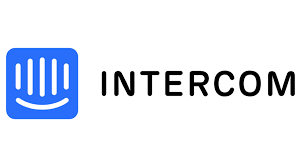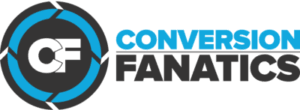LISTEN IN A POD APP
Filters
Max Novak | Novacast
Tech-driven ways to get onto podcasts — Max Novak // Novacast
Max Novak, Founder of Novacast, talks about how podcast booking campaigns create value for listeners and for brands. Podcasts can be a powerful tool to promote your brand, but getting yourself on the right show can be challenging. While direct outreach can work, establishing relationships and leveraging professional networks are often more effective in securing…
Play PodcastMax Novak | Novacast
Are podcast booking campaigns effective? — Max Novak // Novacast
Max Novak, Founder of Novacast, talks about how podcast booking campaigns create value for listeners and for brands. If you’ve ever considered podcast guesting as part of your marketing campaign, now is the time to act as podcasts offer numerous benefits for brands. By putting a member of your organization in the guest seat, you…
Play PodcastYaagneshwaran Ganesh | Avoma
Conversation intelligence for sales enablement — Yaagneshwaran Ganesh // Avoma
Director of Marketing at Avoma, Yaagneshwaran Ganesh, wraps up discussions on the importance of conversation intelligence platforms for B2B organizations. Sales intelligence is incredibly useful for organizations of all sizes. Sales teams can figure out winning sales tactics and marketing teams can better understand customer pain points. Today, Yaagneshwaran explores conversation intelligence for sales enablement.
Play PodcastYaagneshwaran Ganesh | Avoma
Conversation intelligence for marketing — Yaagneshwaran Ganesh // Avoma
Yaagneshwaran Ganesh, Director of Marketing at Avoma, talks about the importance of conversation intelligence platforms for B2B organizations. Marketers running campaigns based on assumptions are bound to be disappointed by their results. Conversation intelligence could be the solution for marketing and sales teams to align their efforts around customer needs. Today, Yaagneshwaran discusses conversation intelligence…
Play PodcastKirsty Sharman | Referral Factory
Launching the perfect referral marketing campaign — Kirsty Sharman // Referral Factory
Kirsty Sharman, Founder of Referral Factory talks with Ben about how you can turn your existing customers into a marketing channel. Referral Factory helps large and small companies to maximise on an untapped marketing resource they already have, their own customers. Why is referral marketing such a big deal, though? Ben and Kirsty outline the…
Play PodcastKirsty Sharman | Referral Factory
Referral marketing tech stack — Kirsty Sharman // Referral Factory
Ben gets into detail about the referral marketing tech stack with Kirsty, founder of referral Factory. How can you turn your customers into a marketing channel? Referral Factory makes it super easy for any business, large or small, to integrate referral programs. You don’t need to have a tech background to sign up for one…
Play PodcastKirsty Sharman | Referral Factory
Why is referral marketing the next big thing? — Kirsty Sharman // Referral Factory
The marketing world is constantly changing. With most companies constantly on the lookout for different ways to get new customers, Kirsty Sharman, founder of Referral Factory, believes that there is so much untapped value you can extract from existing customers. But how do you decide if you need new customers or just a referral plan?…
Play PodcastRand Fishkin | SparkToro
Leveraging influence as a marketer — Rand Fishkin // SparkToro
We’ve come to the final installment of our Marketing Superstar Week with Rand Fishkin, Founder and CEO of SparkToro. So far this week, Rand and I have talked about his tips for building a startup that matches the goals of the founder, how to learn from your customers how to build a product led marketing…
Play PodcastRand Fishkin | SparkToro
Rand’s #1 tip: Emails > Everything — Rand Fishkin // SparkToro
This is our 4th installment of Marketing Superstar Week with Rand Fishkin of SparkToro. So far this week, Rand and I have talked about his tips for building a startup that matches the founders goals. We talked a little bit about learning from your customers and developing your market. Yesterday, we talked about building a…
Play PodcastRand Fishkin | SparkToro
Product-led marketing tips from the Founder of Sparktoro — Rand Fishkin // SparkToro
Welcome to our 3rd installment of Marketing Superstar Week. So far this week, Rand and I have talked about his lessons for building a startup that fits the founder. Yesterday, we talked about how to learn from your customers to market your business. Today, we're going to continue the conversation, talking about product lead marketing…
Play PodcastAbout Marketing Channel: Organic Growth
What is SEO (Organic Growth)?
Search engine optimization (SEO), also known as organic growth, is the practice of increasing brand awareness, acquiring search traffic and conversions through search engine results. Search engine optimization focuses on understanding what people are searching for online and delivering the answers they're looking for with the content users wish to consume.
Although similar to SEM, SEO focuses primarily on organic content marketing to deliver users with the information they need without spending money on search engine marketing. There are two types of search engine results: organic search and paid search.
What are Organic Search Results?
Organic search results appear in search engine results pages (SERPs). Some SERPs are populated with search engine marketing placements, otherwise known as PPC (Pay-per-click) ads. Organic results are earned through on-site technical improvements and organic content marketing efforts. Organic optimizations can include writing blog posts, title tags and meta descriptions.
Organic results can appear in various features of Google SERPs, such as featured snippets, image carousels and knowledge graphs. Organic results are determined by search engine algorithms and their ranking factors vary by search engines.
What is the Main Goal of Search Engine Optimization?
Search engine optimization's main goal is to influence the position of a website in SERPs and search engines. Acquiring organic traffic is the main objective to accomplish this goal without spending from marketing budgets.
Paid ads are expensive, especially for startups and small businesses. Organic search rankings provide qualified leads at no extra cost compared to paid search. Although paid search offers immediate results, SEO is a worthwhile long-term investment and yields high ROI.
What are Ranking Factors?
Ranking factors are criteria search engines use to evaluate websites to compile rankings of organic search results. Website content, technical implementations, the number of backlinks and other features are significant ranking factors. Understanding each search engine algorithm's ranking factors is critical to success in search engine optimization.
Ranking factors are divided into two categories: on-page optimization and off-page SEO. On-page centers on direct adjustments to your website. Off-page optimizes the elements outside your website, which includes link building or social media posts.
Most search engine algorithms prioritize similar factors, including:
- External and internal links.
- Backlink structures.
- Mobile optimization.
- Link building.
- High-quality content such as informative blogs, videos and ebooks.
- Structured headers and subheaders.
- Organized product pages.
- High-quality title tags, meta-tags and meta-descriptions.
- Creating content that meets E-A-T (Expertise, authoritativeness and trustworthiness) standards.
What is Keyword Research?
One of the most important search ranking factors of SEO is conducting keyword research. Marketers and SEO experts perform keyword research to understand what people search for and focus content on those topics. Understanding how high demand is for a keyword phrase informs marketing strategies and how difficult it is to compete for terms in organic search results.
Keyword research is an ongoing task in search engine optimization. Search language is constantly changing, and user search behavior is always evolving. Website content should always seek to fulfill the needs of target audiences as they evolve over time.
Search engine algorithm's web crawlers, like Googlebot, scan webpage content for keyword phrases to connect the most useful content to user queries. The crawlers copy the webpage and its content and then stores it in the search engine's index.
Keyword Research Tools
SEO specialists rely on keyword research tools to identify keyword opportunities to help with content topic brainstorming and to optimize existing content.
Keyword research tools are used to examine semantic search, also known as intent-based search. Search intent covers a wide variety of keywords users enter in search engines to find what they're looking for. Discovering intent-based keywords using keyword research tools requires following three steps.
- Compiling a list of foundational keywords - Foundational keywords align closely with a selected target phrase. The selection of keywords define and give meaning to content and its structure. These keywords are the most common, basic queries users enter to find a company's products or services. Algorithms prioritize foundational keywords and the semantic relationships associated with them.
- Use auto-suggest to uncover keyword opportunities - Auto-suggest is a highly effective way to identify the search volume for keywords you're looking to target. Auto-suggest is an unconventional method for identifying keyword search traffic, but it can help reveal overlooked keyword phrases.
- Hone in and prioritize target keywords - The best performing keywords depend on a combination of several factors. Monthly search volume, cost-per-click (CPC), keyword density and difficulty.
How you prioritize keywords depends entirely on how you aim to influence search results. Targeting a high-volume keyword? Prioritize them first. Targeting specific, low-volume keywords? Elevate them to the top of your list and begin aggressively targeting them. Each approach has its own pros and cons, but you can maximize both of their pro offerings depending on your goals.
The most popular keyword research tools are:
- Moz Keyword Explorer
- Ahrefs
- SEMrush
- Yoast
- BuzzSumo
- Wordtracker
Organic Growth Strategies
SEO's main goal is to drive growth using organic strategies. Marketers drive organic growth by creating company resources and sharing it with their target audiences. A diverse set of resources, often company content like blog posts, drive organic rankings and increase your domain authority among search engines. The more useful your content is, the more likely your domain will rise in search results and increase organic traffic.
Technical optimizations (Technical SEO) are another critical aspect of organic growth strategies. Search engines prioritize websites that load quickly, are technically structured well and provide an engaging user experience.
Organic growth strategies include:
- Providing a positive user experience - Outdated, poor-quality websites are a red flag for search engines. Slow-loading sites not only cause users to bounce resulting in lost conversions, but also indicate to Google that users aren't finding your website useful. The more time a user spends on-page, the more likely Google's algorithm will prioritize your website in search rankings.
Creating a positive user experience requires ensuring your site loads quickly, web pages are logically organized, images are optimized to load quickly and content conveys authoritativeness and value. A user-centric website experience will keep users on-site longer and they're more likely to read your content or peruse product pages.
- Optimizing for voice search options - Voice search for mobile and the increasing use of smart speakers show it's becoming a vital part of SEO strategies. Voice search queries tend to be long-tail queries. They're also phrased as locally-based questions with answers typically pulled from featured snippets.
To optimize for voice search focus on both short-tail and long-tail keyword optimization and local SEO. As you perform keyword research prioritize semantically related keywords. Utilize structured data (Schema markup) to help Google better understand the subject and themes of web pages as it pertains to voice search.
- Design and optimize for mobile-first search - A majority of searches and nearly half of all conversions and purchases occur on mobile devices. Additionally Google prioritizes mobile-first optimizations, indexing mobile web pages before desktop versions.
Mobile-friendliness optimizations should take priority in your SEO strategy. Much of the technical SEO used to optimize websites should be applied in your mobile strategy. Your mobile-friendly website optimization should take precedence over desktop, as desktop-first designs are likely to break or appear disorganized on mobile devices.
- Write engaging, in-depth content - Maintaining a steady content publication cadence is essential for SEO. A healthy mix of high-quality short and long-form content with organized link-building, detailed title tags and relevant backlinks is a winning strategy. Algorithms will easily identify low-quality content, which can decrease your domain authority.
How to Measure Organic Growth
SEO specialists and marketers measure and track organic traffic regularly to make adjustments to campaigns or identify marketing opportunities. Conducting routine analytics on website performance across search engines and other pages is critical to understand how algorithms change and how it impacts your website and other sites.
All the traffic that originates from social media posts, PPC ads, landing pages and every other content or point of entry to your site should be measured. Analytics platforms like Google Analytics are essential SEO tools to measure site-wide performance. Search analytics platforms and their dashboards provide comprehensive views of site-wide performance.
The most prevalent SEO tools and analytics platforms are:
- Google Analytics
- Ahrefs
- SpyFu
- SEMrush
- Moz Pro Tools
- Organic traffic - One of the leading metrics to accurately measure SEO results. Overall traffic numbers can provide insight into a site's general performance. The more traffic a site receives indicates SEO strategies are working.
Reports from analytics software like Google Analytics provides insights from total number of visitor sessions to documenting how those numbers fluctuated throughout the month.
- Bounce rate - When visitors arrive on your site and immediately leave without connecting to an affiliated page is categorized as a "Bounce." The percentage of visitors who bounce from a site is calculated as the "Bounce rate."
It's a useful metric to measure whether a site's content fulfills the user experience. Low-quality content, poor link building and site structures that impede crawlability increase bounce rates. Consistent, low bounce rates indicate a site's pages are performing well and are effective in providing useful user experiences.
- Click-through rates - Click-through rates (CTRs) are the percentage of searchers who visit a site after encountering it in search engine results. CTRs are one of the best indicators of site performance in search results. They also demonstrate how effective a site's title tags and meta-descriptions are in search engines.
- Domain authority - A leading goal in SEO strategy is to improve a site's authority level with search engines. One way to gauge a site's authority is to use website authority checkers. They evaluate a domain and assign it a score between zero to 100 that indicates a site's authority based on its backlink profile. Monitoring the score over time is a fast, easy way to gauge the impact of link building strategies.
- Keyword rankings - An integral metric for organic growth. Keyword rankings are constantly in flux. It's vital to monitor how rankings for keywords change over time to adjust strategies and improve site content. Keyword tools provide comprehensive insights into keyword rankings. Tools like SEMrush provide organic search positions reports, which provide overviews of keyword ranking positions.
- Page speed - Page speed is a valuable technical SEO component. The faster a site loads, the less likely a user will bounce. Evaluating your site speed to user interaction can demonstrate which pages possess low-quality site speed. Page speed measurement tools are widely available like Google's optimization score.
- Conversions - Conversions are metrics that directly represent the success of an SEO strategy's impact on company goals. Conversions measure leads and sales, but can also measure other desired user actions like clicking CTA buttons.
Acquiring conversion data requires setting up custom goals in analytics platforms like Google Analytics. Goals vary from collecting email newsletter signups, lead form submissions and documenting online purchases.
Read MoreRead Less
Sponsors of the MarTech Podcast


























